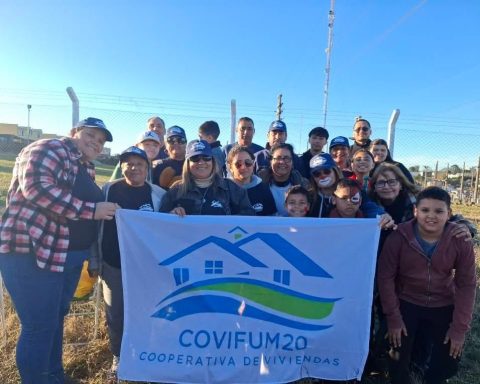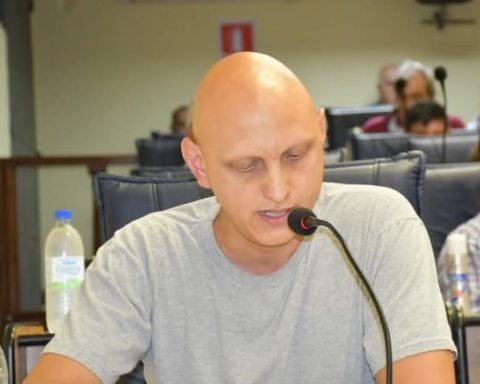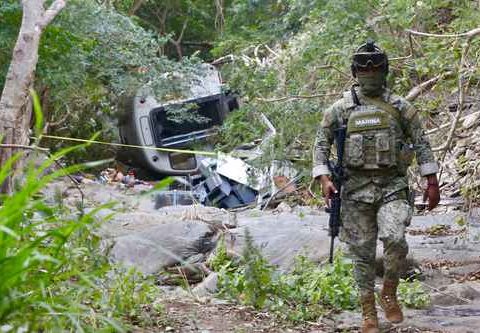Winter has not yet begun but hospitals, specifically pediatric areas, are on alert. More consultations than normal in different medical societies due to respiratory infections and also more hospitalizations both in the ward and in the CTI lead to more demanding pediatricians.
“We have a fairly significant number of queries, around 350 per day when the normal is 250 or 300“, said the director of the Pereira Rossell Pediatric Hospital, Álvaro Galiana, to The Observer. In turn, he acknowledged that the number of children hospitalized both in CTI and in the ward has also increased and that the number is higher compared to the same time in previous years. “There is a high number of hospitalized patients with respiratory infections“, he assured.
As he explained, the most predominant virus is the Respiratory Syncytial Virus (RSV). Following that comes influenza A and B, which are the ones that can be fought through the flu vaccine. “We are concerned about the national situation and also about the news at the regional level of greater virulence of the disease“.
“We are all gathered and deploying measures“, he assured, so that pediatric CTIs are not saturated. In other words, have more beds, more equipment and more medical personnel to treat sick children.
For his part, he pointed out that in his work in the private insurance Personalized Medicine (MP), he has sent children to be admitted to the British Hospital. And from the British Hospital he was informed The Observer that there are also more cases in CTI than in previous years and with greater severity.
For her part, the pediatrician and epidemiologist, Mónica Pujadas, pointed out to The Observer that a general increase is being seen at all levels of care and even in the virulence, that is, in the severity of the cases. He pointed out that this increase has occurred a little before the beginning of winter, something that is not usual either, since the peak of cases usually occurs in July.
Recommendations of the Uruguayan Society of Pediatrics
The Uruguayan Society of Pediatrics (SUP) also ruled on the increase in the circulation of seasonal viruses. “This year in particular we have been observing a especially aggressive behavior Regarding the incidence and severity of respiratory infections in the pediatric population, in both infants and older childrenand many times previously
healthy. This is reflected in the increase in pediatric consultations at all levels of care“, they said in a statement.
“They have also increased hospitalizations in moderate care and ICU, with serious and fatal cases, and both in patients with risk factors and in healthy children and adolescents“, they assured.
That is why they issued certain recommendations:
- Avoid exposing them to sick people or with respiratory symptoms.
- Keep them away from overcrowded places, with a large influx of people and closed.
- Ventilate closed spaces.
- Avoid exposure to smoke and especially tobacco.
- Wash hands with soap and water before and after eating, caring for someone who is sick,
- changing diapers, after touching objects such as telephones, cell phones, computers,
- shopping cart, or after riding the bus, coming home from the street, coughing or
- sneeze.
- Wear a mask if you are with people who have respiratory symptoms.
Risk groups for respiratory syncytial virus (RSV) infection
- Age less than 12 weeks
- History of preterm birth (particularly less than 32 weeks)
- Underlying cardiopulmonary diseases (including bronchopulmonary dysplasia and
- hemodynamically significant congenital heart disease)
- Children and adolescents with neuromuscular disorders
- Immunocompromised children and adolescents
Risk groups for influenza virus infection (flu).
- Children under 5 years of age, especially those under 2 years of age
- Adults over 65 years
- pregnant
- People with medical conditions including: immunosuppressive disease, asthma, neurological diseases, especially neuromuscular, chronic lung disease, diseases of the cardiovascular system, hematological diseases, diabetes, kidney and liver diseases, metabolic disorders, under 19 years of age receiving long-term treatment with acetylsalicylic acid, children and adolescents with obesity.















